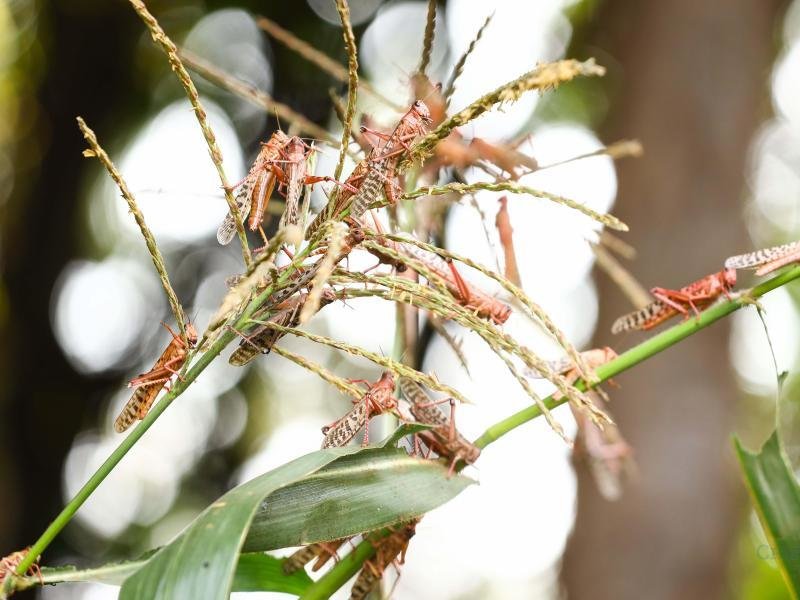
Locust plague: Experts warn of a new wave | Free Press
Nairobi (dpa) – More than a year after the outbreak of grasshopper plague in East Africa, experts warn of the possibility of a new, more devastating wave.
“The situation in Kenya is worse than it was last year,” Kenneth Mwangi of the East African Climate Center (ICPAC) told Deutsche Presse-Agentur dpa. This time, more districts than last year reported locusts and more agricultural areas were affected. The biggest fear is that locusts will now find more space to lay eggs. “This means that with the new rainy season, a new, larger generation can hatch.”
At the end of 2019, East Africa experienced its worst desert locust plague in decades. Millions of insects have fallen over vast areas of land, destroying fields and pastures. The consequences of such a massive outbreak can be enormous: a swarm of desert locusts measuring about 1 square kilometer can eat up to 35,000 people a day. Kenya, Ethiopia, and Somalia were hit hard, as were the Arabian Peninsula and Pakistan.
Until now, the plague was difficult to control. On the other hand, it rained heavily in East Africa in 2019 and 2020, resulting in more vegetation and thus more food for insects. On the other hand, locusts were able to spread widely: as adults, insects can fly more than 130 kilometers a day with favorable winds. In countries like Somalia, fighting locusts is particularly difficult due to conflict. In addition, the Corona crisis has made the battle more difficult for months.
This year the insects are fewer in number and the swarms are smaller than last year, said Keith Cressman, an expert on grasshoppers at the United Nations’ Agriculture Organization (FAO). This is partly due to less favorable weather conditions for locusts: The last few months in East Africa have been significantly drier compared to the same months of the previous year.
But that will soon change, as East Africa is now on the verge of a long rainy season. For farmers, this is when they plant their fields. This is very beneficial for locusts, Mwangi explains. On the other hand, insects need moist, sandy soil to lay their eggs. On the other hand, newly hatched grasshoppers will find young plants as forage in the fields. “We believe there is a greater risk to harvest this year than last year,” says Mwangi, not only in Kenya but also in Ethiopia.
That is why humanitarian workers are sounding the alarm. “We are very concerned about the fundamentals of life and the people affected,” says Celia Brewer of Welthungerhilfe in Kenya. Because people in East Africa are experiencing multiple crises, Brewer said: Many have already been affected by the first locust infestation. In addition, residents repeatedly suffer from severe weather conditions – from droughts to floods – as well as the Coronavirus pandemic and the economic consequences.
Between August and September 2020, about 1.8 million people in Kenya did not have enough to eat, as figures for identifying food insecurity around the world show. For the country’s inhabitants, Brewer said, the upcoming rainy season is a “double-edged sword”: People need rain to harvest them, but at the same time, the rains will feed the plague of locusts.

“Organizer. Social media geek. General communicator. Bacon scholar. Proud pop culture trailblazer.”
